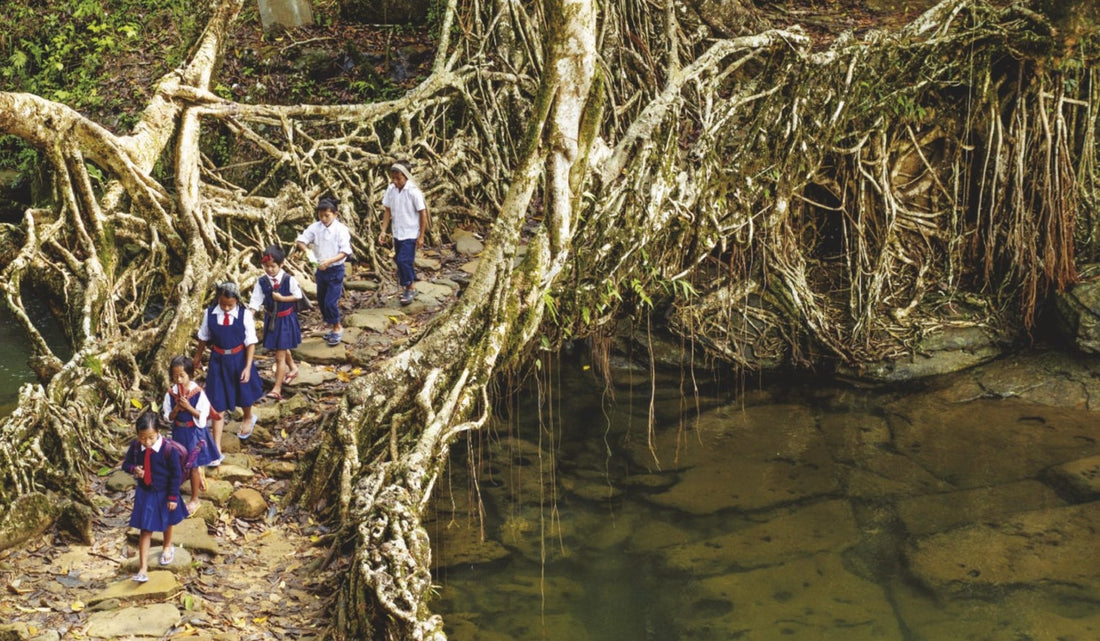
Living Root Bridges

Images: Julia Watson / Taschen.
In our current issue Selvedge 94: Earth, we look at indigenous architecture with an excerpt from Julia Watson’s book, Lo-TEK, Design by Radical Indigenism: “One of the world’s most innovative examples of an indigenous infrastructure are the living root bridges and living root ladders of the Khasi tribe of Northern India. The Khasis are an indigenous hill tribe from the state of Meghalaya, which translates to ‘above of, in the clouds.’ Their forested lands overlook the plains of Bangladesh and are in a monsoonal rain shadow with the highest levels of precipitation found on earth. During the monsoon, travel between villages is cut off by floodwaters that transform the landscape from a thick canopy to isolated forest islands. The Khasi have developed the only bridges able to withstand the force of the monsoonal rains."

"In the forest, the root bridges and their organic looking composition appear to have grown themselves, reaching across rivers, as though the forest canopy had itself folded to form connections. In reality, the Khasis plan their living root bridges a decade in advance, planting rubber fig trees at critical crossings along rivers. After thirty years of training the roots across the rivers, a bridge can carry a load of up to fifty people."
Watch Julia Watson talking about her book, “Technology can be different. Technology can just use nature and the systems that nature is composed of, to do things for us like clean sewerage and provide drinking water. That’s architecture that is beautiful and emblematic of a particular place.”
"The hollowed out trunk of the betel nut tree is used as scaffolding around the secondary root system of the rubber fig tree. Over time, the roots are trained to grow across the river, by encasing them in the bark trunk, like a cast wrapped around a broken bone. A new jingkieng dieng jri, which translates to ‘rubber tree bridge,’ takes one generation to grow using the construction system passed down through many generations. The Khasi people take into consideration the biological growth and development of the tree in order to grow the bridges to the opposite bank."
To read the rest of the article, you can buy Issue 94 here, this issue is only available from Selvedge.
A reminder that the competitions from Issue 94 close on 15 June, you can enter online for free.

1 comment
Many thanks for featuring this book! Have immediately bought it.